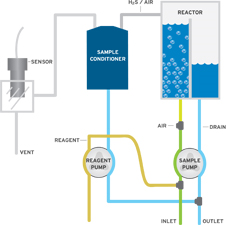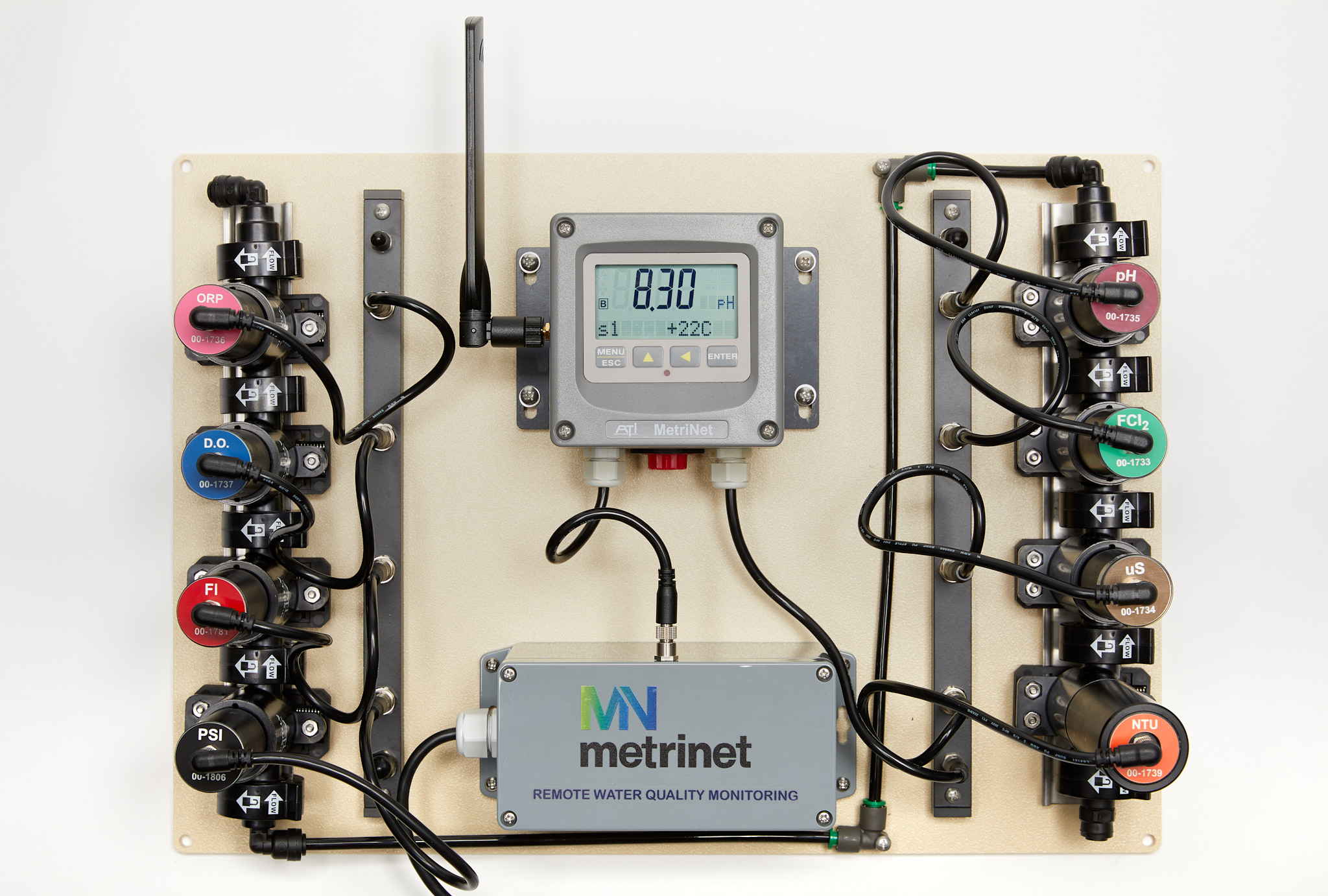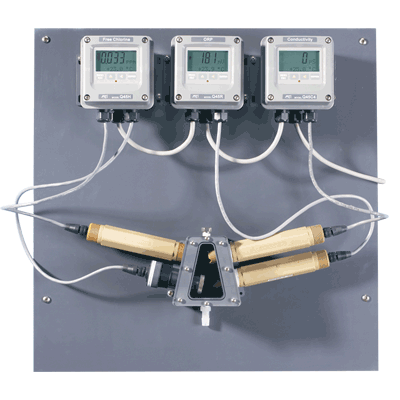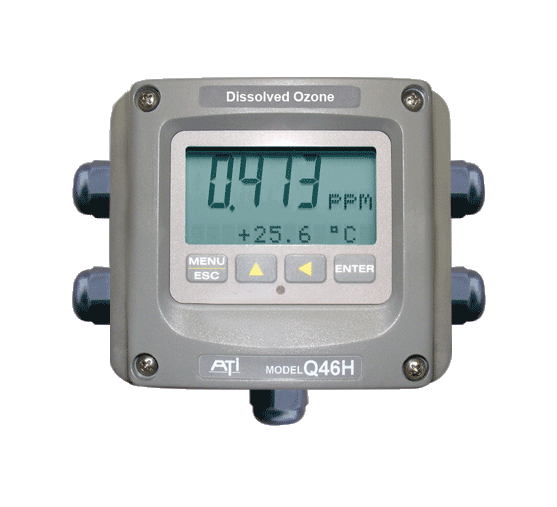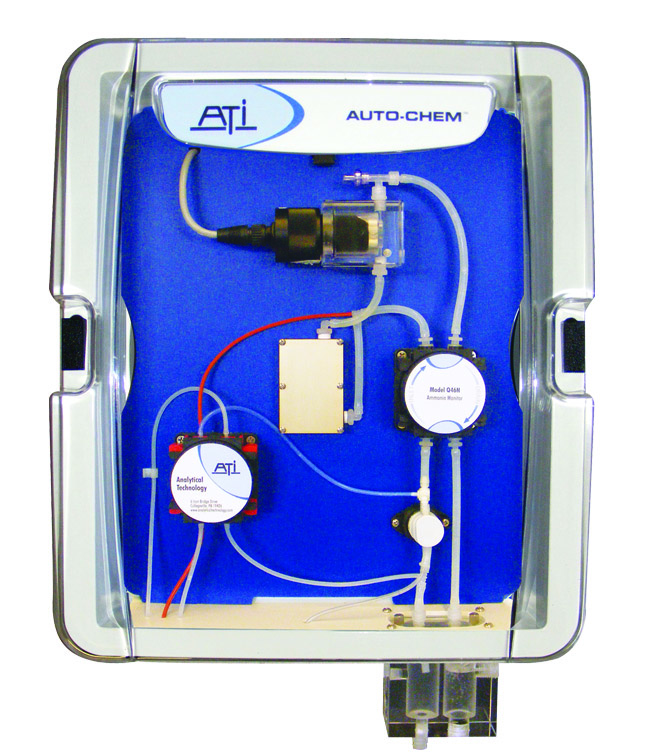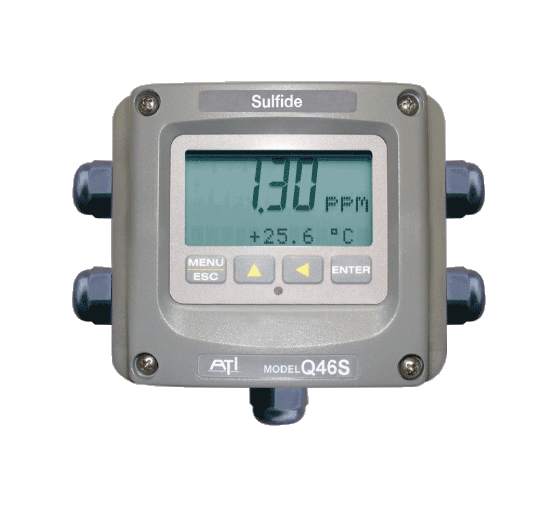
ATI Q46S-81 Sulfide Monitor
Construction:

High Sensitivity Sulfide Monitoring!
ATI’s Model Q46S/81 Dissolved Sulfide Water Quality Monitor provides an improved method for measuring sulfides in solution.
Sulfides can be found naturally in well water and can build up in wastewater collection systems due to anaerobic conditions frequently found there. In addition, sulfides are used in mercury removal processes and are frequently found in tanning wastes. In drinking water systems, sulfides cause taste and odor problems. In wastewater systems, sulfides cause damage to concrete structures in collection systems and contribute to odor problems in treatment facilities.
Measurement of dissolved sulfide concentrations has been done primarily by the use of analyzers employing ion selective electrodes (ISE) for sensing. While providing adequate sensitivity, ISE based systems require frequent zero and span adjustments to maintain measurement accuracy. Because of this, most ISE based monitoring systems are relatively expensive and require frequent service.
A Gas-Phase Approach to Sulfide Measurement
THEORY OF OPERATION
Because measuring the sulfides in solution is relatively difficult, the Q46S/81 Monitor takes a different approach to the measurement, employing a unique gas-phase method to continuously monitor sulfide without contact between the sensor and the water sample. In operation, a small amount of sample is pumped into the system and mixed with acid. In acidic solution, the sulfide ion is converted to hydrogen sulfide gas as follows:
HS- + H+ S= + 2H+
The mixed sample flows into a special chamber where the hydrogen-sulfide is stripped from the sample. A gas conditioning module prepares the gas sample for measurement prior to contact with a special H2S gas sensor designed for the system. Sensor signals are amplified and displayed on a large-format, backlit LCD display in the Q46S electronics unit.
| |
PRODUCT FEATURES
Sulfide Measurement
Sulfide ion is measured selectively by conversion to hydrogen sulfide.
Gas Phase Sensing
Measurement is made without contact between sample and sensor, eliminating the potential for sensor fouling.
Chemistry Module Power Options
Power options include 115 or 230 VAC, 50/60 Hz.
Three Control Relays
Relays are programmable for setpoint, deadband, and time delay.
Sample Line Cleaning
Internal sequencing and relay system for automated sample line cleaning.
Digital Communications
Communication options for Profibus-DP, Modbus-RTU, or Ethernet-IP.
 Download
Download


